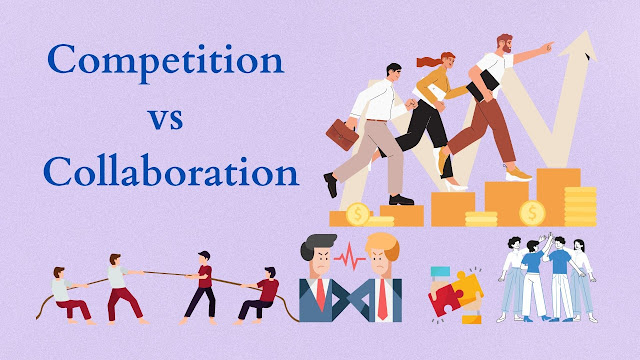It's been nearly 25 years since I first delved into Marcus Buckingham and Curt Coffman's groundbreaking management book, "First Break All the Rules." I vividly remember having the 12 elements of great managing posted on my work desk – a constant reminder of principles that left a lasting impact on my professional journey.
My Desk 2000-2012 (Top left sketch by Shravan 1997)The book, born out of Gallup's comprehensive study of exceptional managers, challenges conventional management practices. It underscores the significance of leveraging employees' strengths, tailoring management approaches, and fostering a positive workplace culture to amplify engagement and performance.
The 12 Elements of Great Managing:
- I know what is expected of me at work.
- I have the materials and equipment necessary to do my job.
- At work, I have the opportunity to do what I do best every day.
- In the last seven days, I have received recognition or praise for doing good work.
- My supervisor, or someone at work, seems to care about me as a person.
- There is someone at work who encourages my development.
- At work, my opinions seem to count.
- The mission or purpose of my organization makes me feel my job is important.
- My associates or fellow employees are committed to doing quality work.
- I have a best friend at work.
- In the past six months, someone has talked to me about my progress.
- In the last year, I’ve had opportunities at work to learn and grow.
How I Executed It (2001-2012 at Corporate and then in Consulting):
#1: Established clear goals with metrics, ensuring alignment with the organization's objectives. Decided month before with Key Steps and Indicators, Specific, Measurable. My bosses were very clear and I also aligned fully. No mixed messages.
#2: Utilized a risk-based approach and long-term planning / Resources required, in the EHS domain to execute tasks without surprising top management.
#3: Aligned seamlessly with companies valuing excellence, making task execution and result delivery appearing effortless. The companies I worked from 1985-2012 belived a lot in operational excellence, so it fitted very well. So I took like Fish to swimming in water to execute tasks, getting things done, delivering results effortlessly.
#4: Engaged in periodic reviews with managers, making annual performance reviews straightforward like a walk in the park, and devoid of surprises.
#5: Acknowledged and appreciated the pivotal role of managers in personal, professional, and social success. Oh yes, I owe my personal/ professional /social succes to my managers. Every manager I worked, I still keep in touch, despite leaving corporate 12 years back.
#6: Embraced self-driven motivation while seeking mentorship when needed, viewing asking for help as a sign of strength.
#7: Thrived in environments where my expertise aligned with core company values, ensuring no job change due to misalignment of values/ my expertise. My job change has always been for growth to take up a bigger role.
#8: Contributed to the betterment of humankind in various sectors, aligning with companies in pharmaceuticals, chemicals, agrochemicals, heavy engineering, and aerospace/transportation. I always felt I am contributing to a greater cause of keeping people safe which aligned to the values of the company.
#9: Recognized the importance of an exceptional team and peers, instrumental in achieving collective success. Amazing Peers/ Team, without them I could have acheived nothing. Also all my directs such pleasure to lead them.
#10: Grateful for colleagues who facilitated rule-breaking and provided technical assistance during challenging moments. Yes, Few colleagues who helped me to "Break the Rules" as well as help on Technical aspects when you get dead end/ stone walled on march! Oh Yes one of my manager shaped my personal life with coaching me on How to be better dressed, how to bring up children right way, and give them freedom and independence right from age 4.
#11: Maintained regular one-on-one sessions, ensuring continuous progress, visible results, and smooth performance reviews. Many times Results rating always "Exceeds Expectations"!!
#12: Prioritized personal development through continuous learning, a principle still embraced in my consultancy journey. "Elementary, My dear Watson"
"First Break All the Rules" continues to be a guiding beacon in my management philosophy, shaping my approach to leadership, teamwork, and personal growth.
Award post leaving Job. One of the biggest A-ha Moment of my life that I will cherish forever.Dr VBV Rajan, my BASF Boss(1997-99 Mangalore) I learnt personal side of life, to be a good father- bring up kids..... Work discipline- the non technical aspects of managing, from him. (Photo 2017, India visit). I owe my Technical Skills to Sandoz (1991-96)- my VP Mfg. Late Mr. DK Biwas. Dr Rajan's colleague at ICI. Conclusion:
In reflecting on the journey from when I first encountered 'First Break All the Rules' to where I stand now, it's evident that the 12 elements of great managing have been more than just principles; they've been guiding lights shaping my professional landscape. These timeless principles, derived from Gallup's profound study, have not only influenced my managerial style but have become integral to my work ethos. As I share my experiences of aligning these principles with my roles in corporate and consulting realms, it's apparent that 'First Break All the Rules' is not just a book—it's a compass steering leaders toward effective, engaging, and purposeful management. In a career spanning decades, these principles remain relevant, and the impact resonates in the fabric of my journey. Here's to continuous learning, growth, and the enduring wisdom encapsulated in those 12 elements.
Karthik
28th Jan 24. 1430 Hrs.


















